What do the three reports say about the fate of Cyrus the Great's body?
Surena Firuzi
Master of Archaeology
About the end of the work of Cyrus II (The Great Cyrus) , known as "big", there are three basic reports, the writings of Herodotus in the first book of his work based on street hearsay, the writings of Ctesias, which were a copy of the official archives of Persian historiography, and the writings of Xenophon, who used an archive close to that of Ctesias. They were copied by the Greek-speaking author himself. Earlier and in the year 93 Sohri, in the Amrdad weekly, a map linked with "Courosh's Biography", an abstract of the data of these three fundamental writings about the fate of Cyrus the Great and his body was mentioned.. Here we analyze those data in a special way.
What Herodotus says
According to the writings of Herodotus, Cyrus engages in a battle with a group of Scythians called the Massagetes.. A woman named "Tomoris" or "Tomiris" rules over them. After choosing Kamboja as the successor, Cyrus and his army passed through Sirdia, first there were unsuccessful battles, then part of the Persian army was destroyed, Shahriar was killed, Timuris found Cyrus' body and beheaded him. (There is no mention of beheading), in a bowl of blood (Book 1, paragraphs 214-204). Herodotus himself wrote that he brought his favorite report from among other reports (Ibid., para 214). A report that is inconsistent with today's archaeological remains as well as two parallel reports.
What Ctesias says
According to Ctesias's transcript from the official archives of the Achaemenid Persian Empire, Cyrus went to the land of "Derbices", who were under the command of a man named "Amoraios" and were of Scythian or Indian origin.. Due to their connections with India, the Derbics had elephants, the riders of Cyrus escaped. Cyrus's horse threw Shahriar and then wounded him on the thigh with the spear of an enemy soldier. Iranians took Cyrus to the camp. close to 10 A thousand people were killed on both sides. In the battle of Sepsin, the Iranians won and the land of Derbics was taken from Cyrus. But the wounded Shahriar was dying. He made Kambojiya his successor and appointed Bardia to the governorship of Balkh, Khwarezm, Parth and Kerman.. After a number of orders, wishes and prayers, he died three days after being wounded (Ctesias, Synopsis of Photius, Books 8-6).
What Xenophon says
Xenophon's report, which is rich in transcripts of archived conversations of prominent political and moral leaders of the Medes and Persians, has a theme between Herodotus' report and Ctesias' report.. Like Ctesias and the official archives of Pars, Xenophon has written that Cyrus fell to his death bed and spent several days giving advice and giving his will.. But the two of them did not mention the war, it seems that the events of the battle with the Scythians were deleted in Xenophon's report.. On the whole, Xenophon's account is more detailed than the previous two accounts. Cyrus, in his final words, instructs his eldest son Cambyses not to force his heart and to keep friendships.. Also, the administration of the affairs of the country should be in the hands of fellow citizens and not strangers from different lands and blood.. He calls his country "dear and cherished" and requests that his body not be placed in a coffin to create a part of the soil.. After a few more words, he finally passes out in peace and in bed (Koroshnameh, Book 8, Chapter 7).
what happened
According to the above three reports as well as the documented tomb of Cyrus II, the death of Cyrus should be evaluated based on the maximum data of the aforementioned documents and consistent with the field evidence.. Two documents (The writings of Herodotus and Ctesias) Of the three documents, one of them (Katsias report) It was based on the official writings of the empire, they talked about the battle of Cyrus in the north-east of the country, therefore, Cyrus being in this battle and being shot is a stronger report.. On the other hand, two reports also (Ctesias' writing and Xenophon's writing) The talk of Cyrus falling to the bed, his final words and orders to the surrounding people have been brought forward.. Also, these two documents, contrary to the claim of Herodotus' report, did not mention anything about the body of Cyrus falling into the hands of the enemy, but contrary to that, they stated that it was in the Iranian camp..
In this way, it is possible to obtain such a historical documentary report that is consistent with archaeological documents: Cyrus fought with people outside the borders of his empire in the east of Sirdaria and won over them, but in this conflict, he was wounded, he was hospitalized for three days in the camp of his army, he said his last words which were recorded.. He finally died.
How to bring the body from the east of Sirdarya to Pasargad
According to the tomb of Cyrus, the body must have been moved from the east of Syr Darya, kilometers away, but how could this happen in order to prevent the corruption and smell of the body and to carry out special rituals and dressings in Pasargad?
The answer can be found in a method that is close to 200 It was reported to the Chinese the following year. In this ancient method, the Chinese moved the body of Emperor Shihuangdi in an interesting way.. Shi Huangdi had passed away on a journey and many miles away from the throne. Therefore, the Chinese placed the emperor's body in a cart full of salted fish and in this way, they were able to avoid the mentioned problems and bring him to the throne and put him in his tomb. (Hall, 1381: 98-97).
Since the knowledge and spread of this ancient method is in our hands today and we have no other alternative, it seems that such a method must have been used for the body of Cyrus the Great.. If so, this method was an innovation of the Iranians, which was brought to China later and during the Parthian period, from the same lands upstream and east of the Syr Darya..
It was in this way and with the mentioned method that the body of Cyrus reached Pasargad with less damage and was placed in his tomb.. A tomb that has survived to this day and was not lost or forgotten like the tomb of Alexander, the destroyer of his empire..
Help letters:
Herodotus, History, Book 1, 2013, translated by Hadi Hedayati, Tehran, University of Tehran Publishing and Printing Institute, second edition..
Ctesias (Summary of Photius), 1380, translated by Ghayab Khalili, Tehran, Kausar Cultural Tourism Organization.
Xenophon, Kuroshnameh, 2014, translated by Reza Meshaikhi, Tehran, Scientific and Cultural Publishing Company, fifth edition..
Hall, Eleanor J., Ancient China, 1381, translated by Mehdi Haqitkhah, Phoenix Publications.
Source :
http://www.iranboom.ir/nam-avaran/koroshe-bozorg/16740-sarnevsht-peikar-korosh-bozorg.html


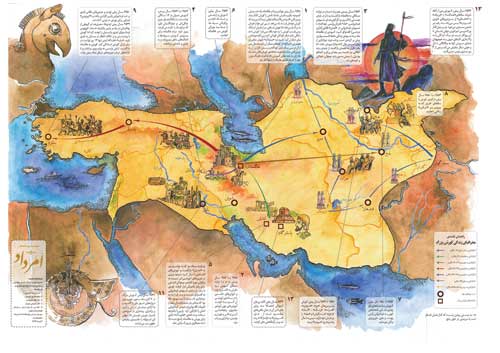
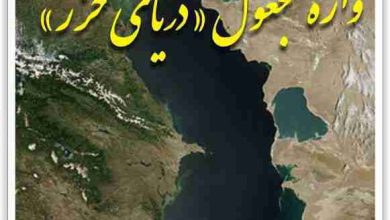
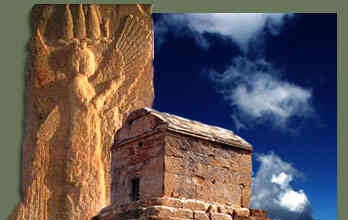
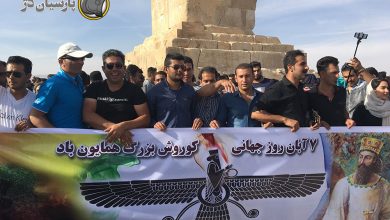
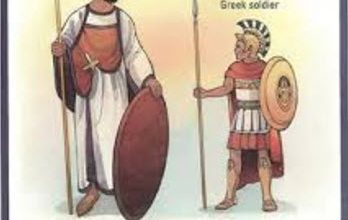
Hello
Considering that the Achaemenians and all governments that were able to write recorded important events, is there any writing, petroglyph, or clay inscription that records how Cyrus' body was brought to the capital?